Tag: ventilation

Higher vs. Lower PEEP in ARDS Patients
In our meta-analysis of RCTs, higher positive end-expiratory pressure (PEEP), compared with lower PEEP, was not associated with mortality in patients without acute respiratory distress syndrome (ARDS) receiving invasive mechanical... read more
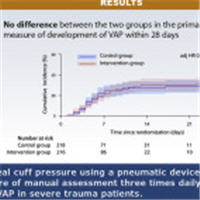
Continuous Pneumatic Regulation of Tracheal Cuff Pressure to Decrease VAP in Mechanically Ventilated Patients
Continuous regulation of cuff pressure of the tracheal tube using a pneumatic device was not superior to routine care in preventing Ventilator-associated pneumonia (VAP) in patients with severe trauma. A total of 434 patients... read more
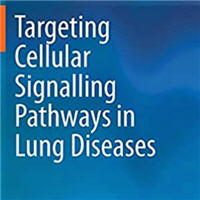
Targeting Cellular Signalling Pathways in Lung Diseases
The book comprehensively reviews and provides detailed insight into the cellular and molecular signalling mechanisms involved in pathophysiology of various respiratory diseases, towards developing effective therapeutic strategies... read more

RECOVERY-RS trial finds CPAP reduces need for invasive ventilation in hospitalised COVID-19 patients
The NIHR-supported Respiratory Strategies in COVID-19; CPAP, High-flow, and Standard Care (RECOVERY-RS) trial has demonstrated that treating hospitalised COVID-19 patients who have acute respiratory failure with continuous... read more
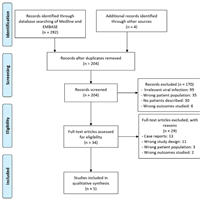
Cystic Fibrosis in the COVID-19 Pandemic
Severe acute respiratory syndrome coronavirus 2 (SARS-CoV-2) infection and the development of life-threatening COVID-19 are believed to disproportionately affect certain at-risk populations. However, it is not clear whether... read more
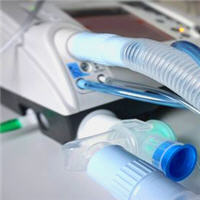
Discordance Between Respiratory Drive and Sedation Depth in Critically Ill Patients Receiving Mechanical Ventilation
Sedation depth is not a reliable marker of respiratory drive during critical illness. Respiratory drive can be low, moderate, or high across the range of routinely targeted sedation depth. 56 patients undergoing 197 bedside... read more
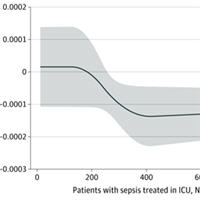
Higher ICU Sepsis Case Volume Associated with Significantly Lower Hospital Mortality
In this cohort study of 273,001 patients with sepsis at 231 ICUs in the UK, a higher annual sepsis case volume in the ICU was associated with significantly lower hospital mortality, and this association had no significant... read more
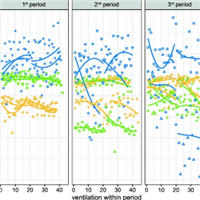
Reliability of Mechanical Ventilation During Continuous Chest Compressions
All investigated transport ventilators were able to provide alveolar ventilation even though chest compressions considerably decreased tidal volumes. Our results support the concept of using ventilators to avoid excessive... read more
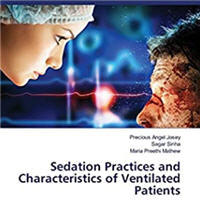
Sedation Practices and Characteristics of Ventilated Patients
Patients on mechanical ventilator experience anxiety and physiological stress. Sedating them can help those patients to cope up with ET tube, to bear all the interventions, for accessing adequate oxygenation and above... read more
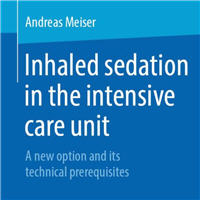
Inhaled Sedation in the ICU: A New Option and Its Technical Prerequisites
Andreas Meiser summarizes the current literature on inhalation sedation of critically ill patients. To meet clinical demands, he describes the development of new devices to administer volatile anesthetics together with common... read more

Managing Rising COVID-19 Cases in ICU
I have been working in intensive care for over 20 years, including a decade as a consultant, and facing winter pressures has always been the norm. However, the past 18 months have been something else. During the winter... read more
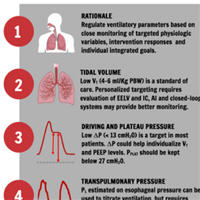
Personalized Mechanical Ventilation in ARDS
A personalized mechanical ventilation approach for patients with adult respiratory distress syndrome (ARDS) based on lung physiology and morphology, ARDS etiology, lung imaging, and biological phenotypes may improve ventilation... read more
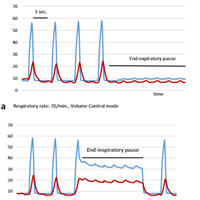
When Could Airway Plateau Pressure is Acceptable in ARDS Patients?
Limitation of plateau pressure (Pplateau) is critical for pro-tection from ventilator-induced lung injury in patients with acute respiratory distress syndrome (ARDS). Limiting to a 30 cmH2O threshold is a widely accepted... read more
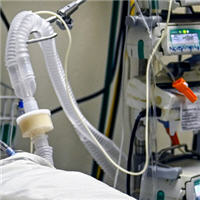
Effect of Graded Early Mobilization on Psychomotor Status and Length of ICU Stay in Mechanically Ventilated Patients
This research showed that graded early mobilization was highly effective to improve the motor and psychological status of mechanically ventilated patients and reduce their length of ICU stay. In the control group mean... read more








